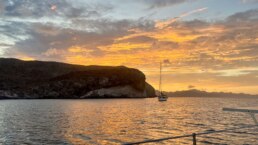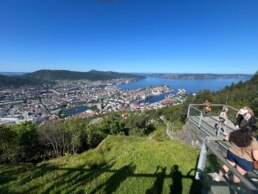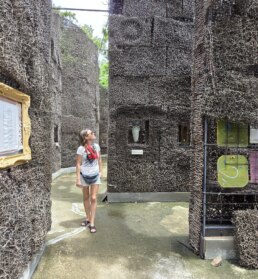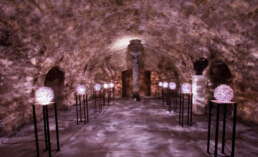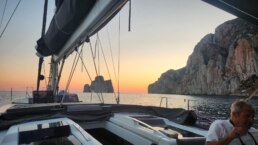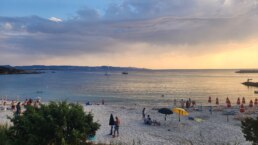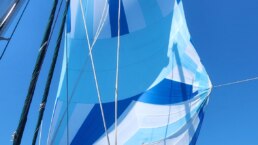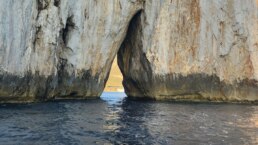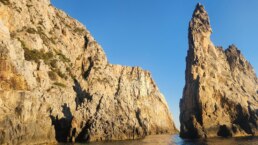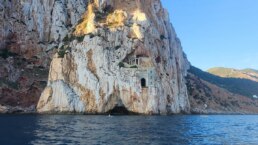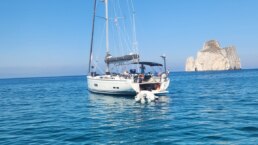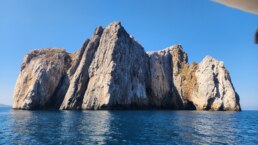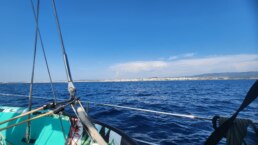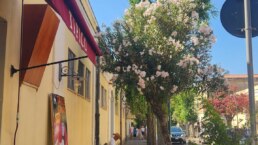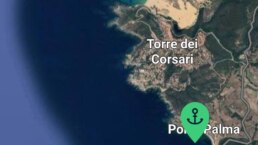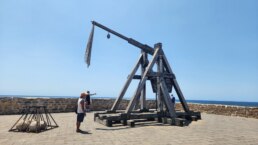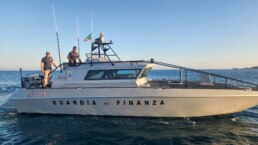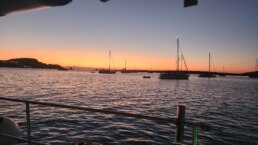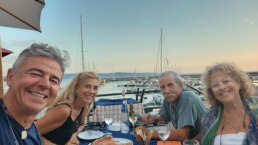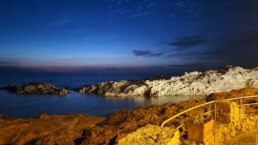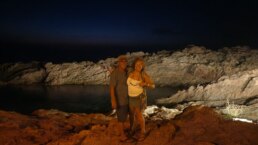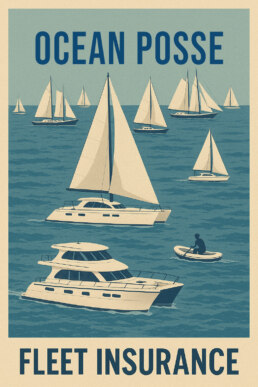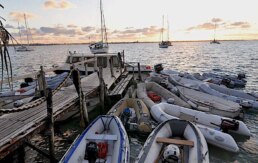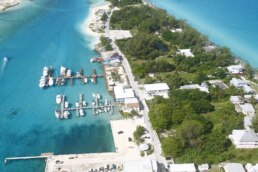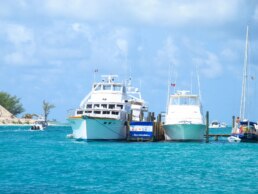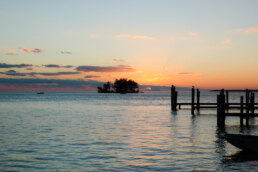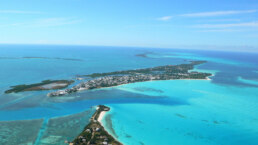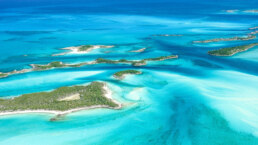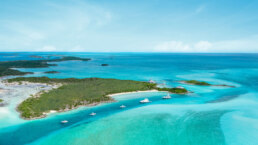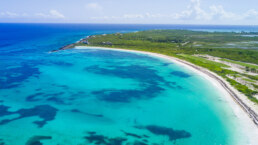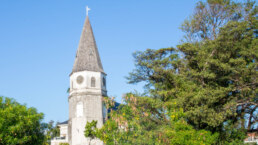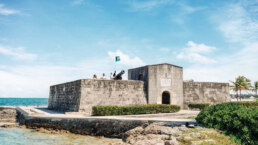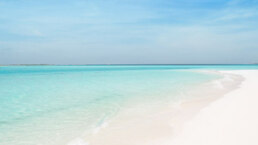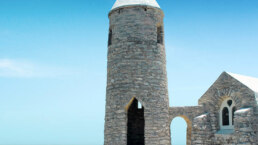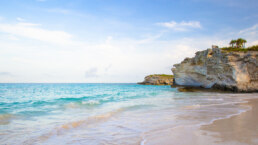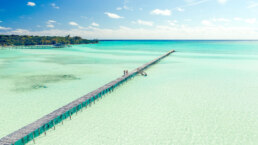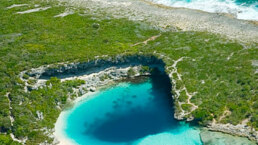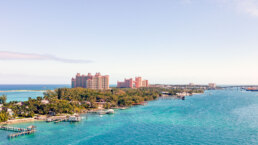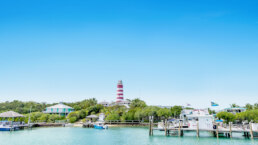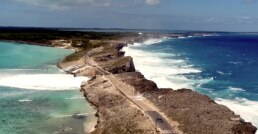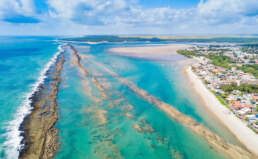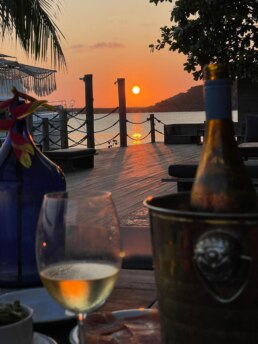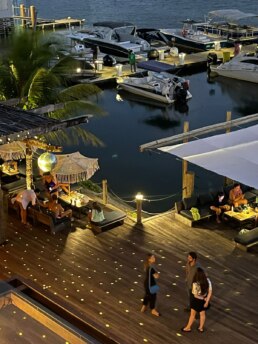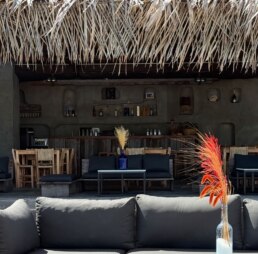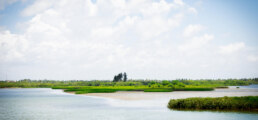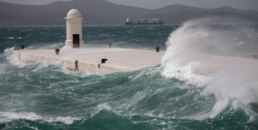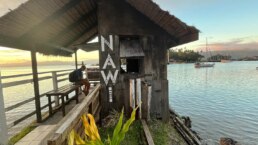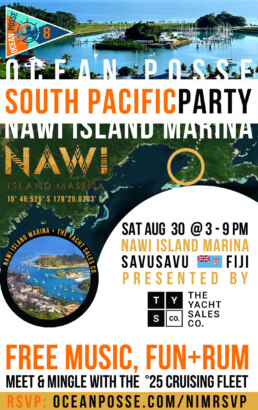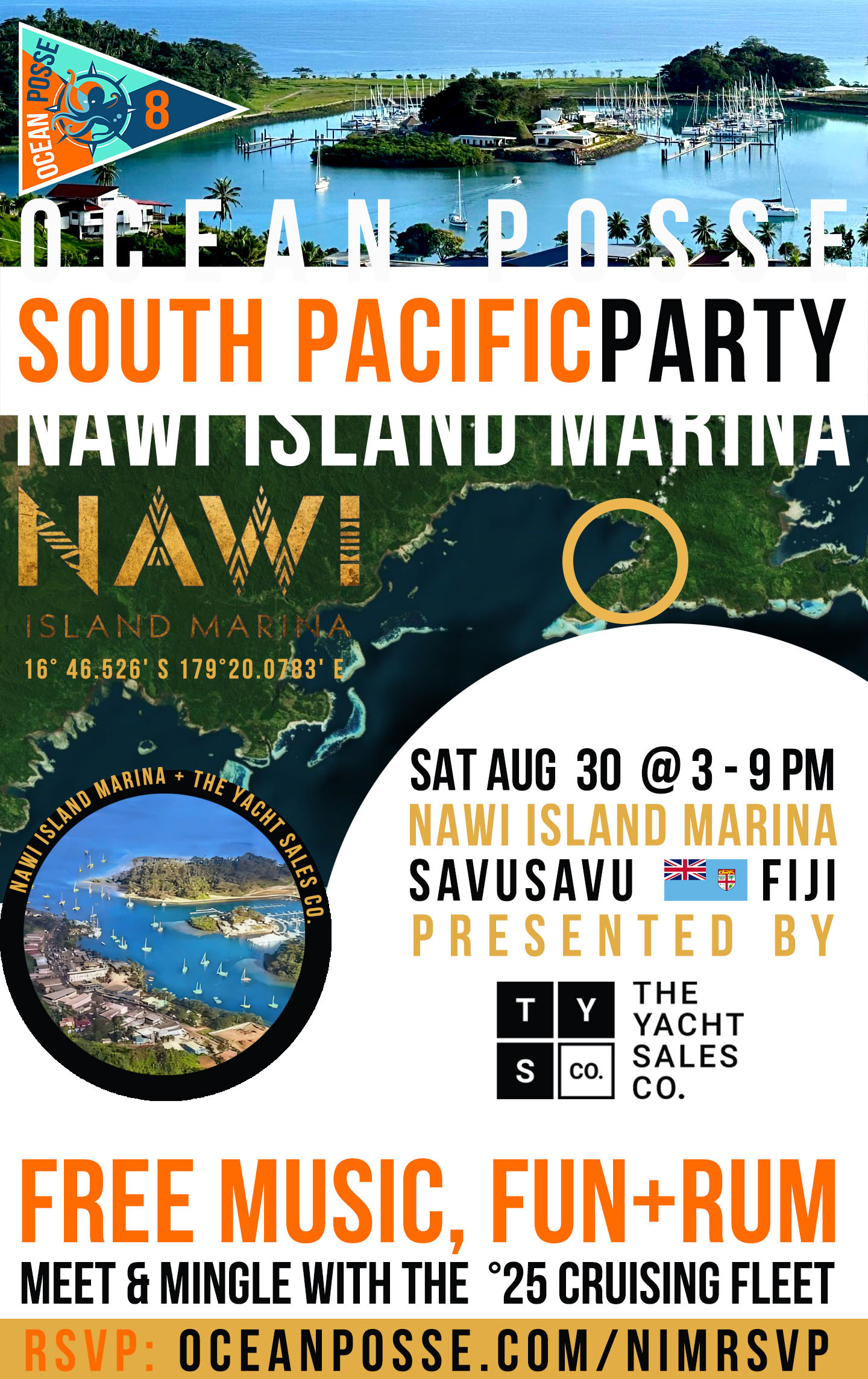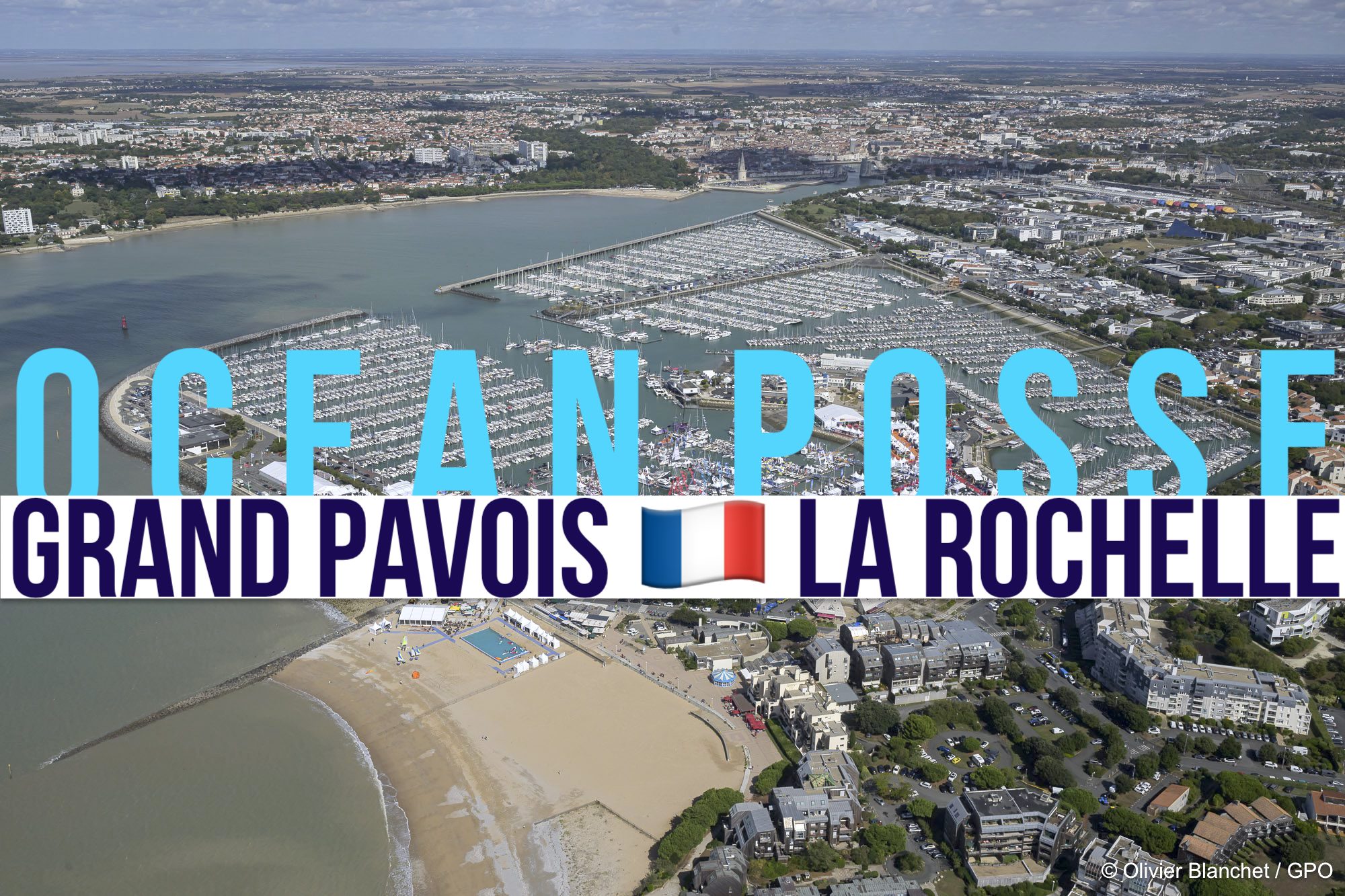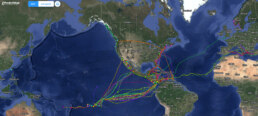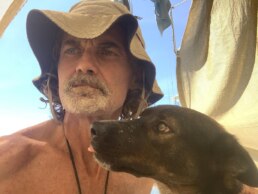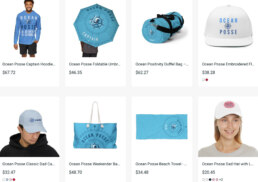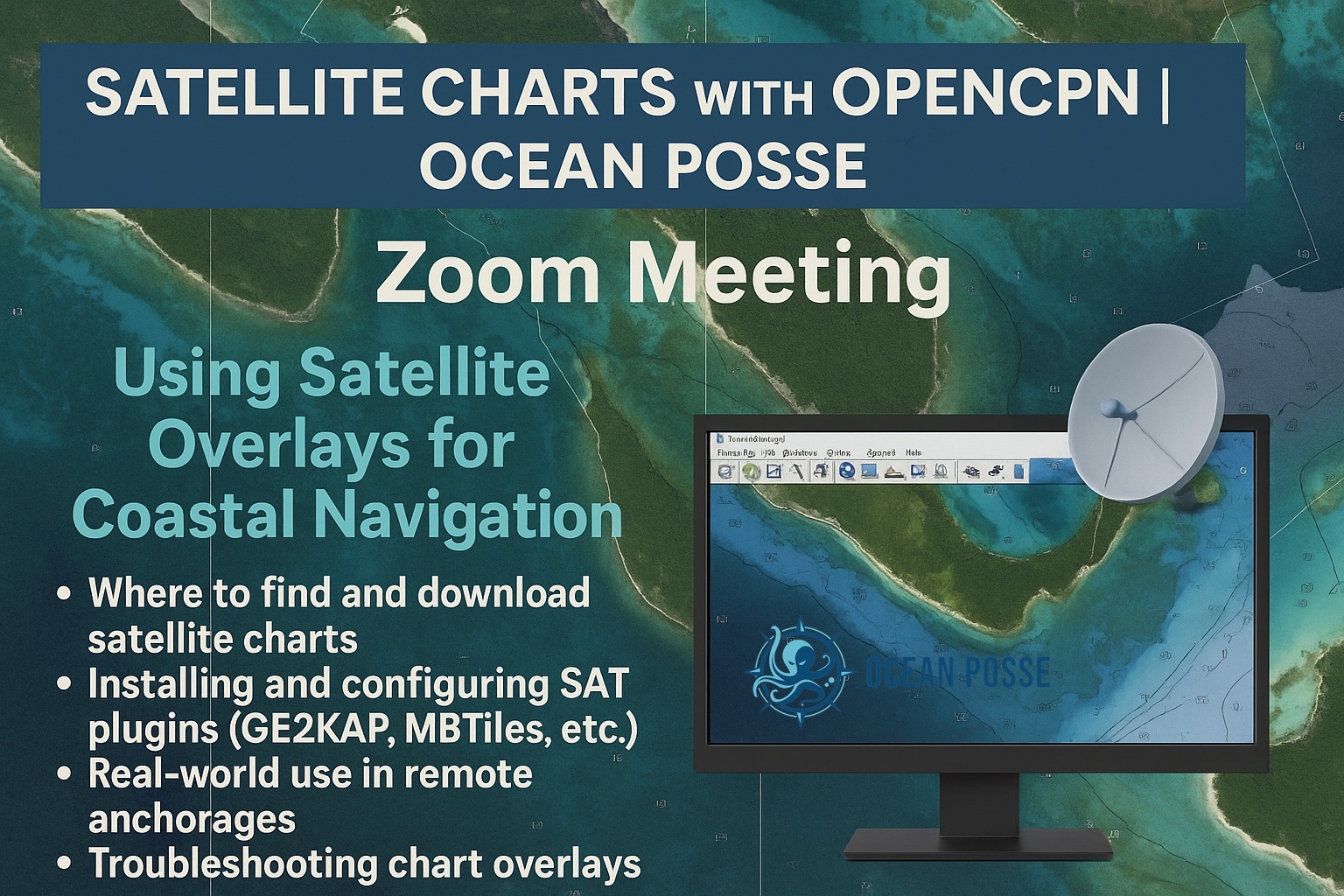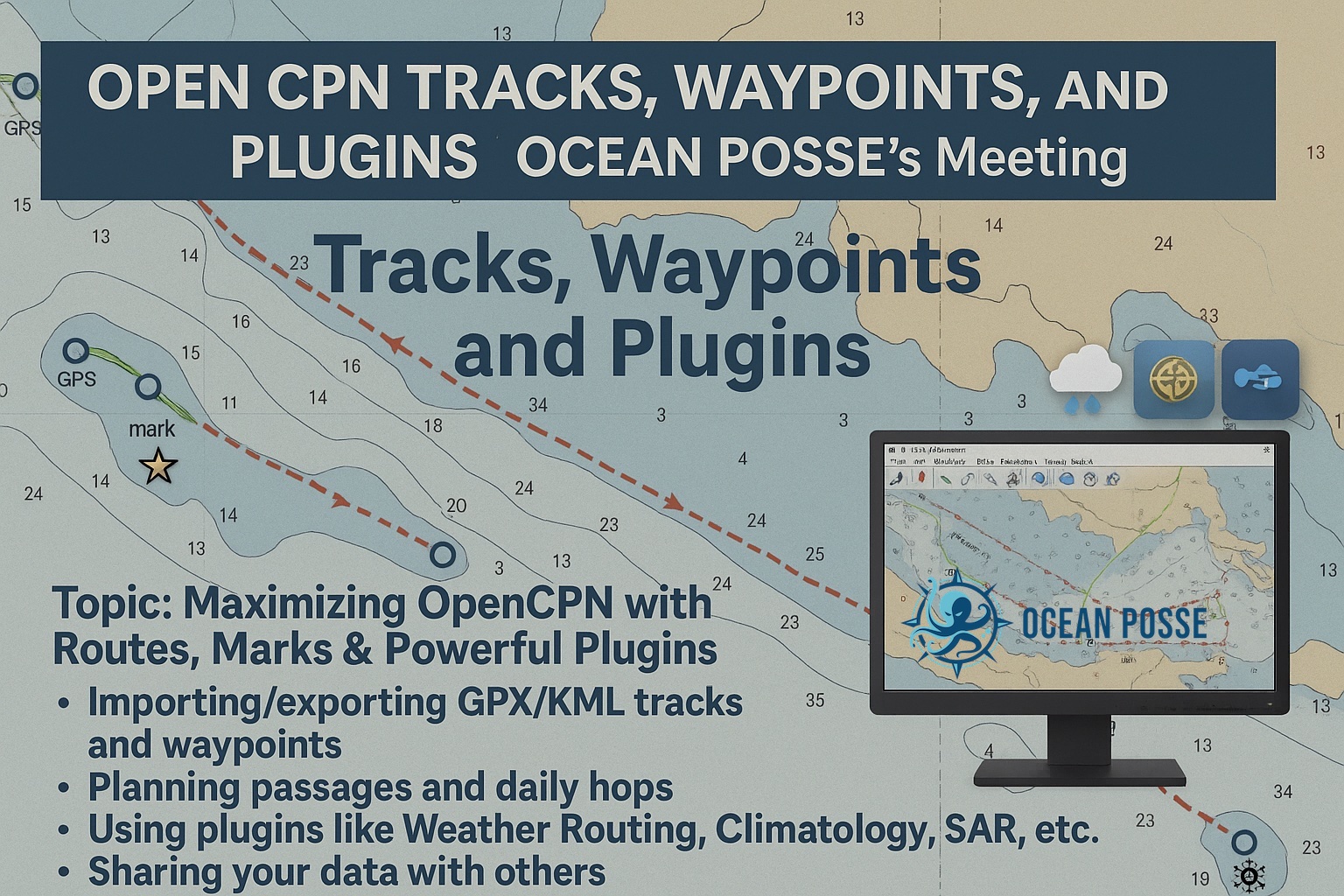The sea does not reward those who are too anxious,
too greedy, or too impatient.
too greedy, or too impatient.
CRUISING ° FLEET UPDATE & NEWS ⚓ 2025-07-13
• Pictures Of The Week 📷
• Ocean Posse Fleet Insurance Plan ☂️ (8 Years In The Making)
• Browns Marina – Bimini 🇧🇸 Bahamas
• The 30 Day જ Bahamas
Loop
• Must See 📍 Glass Window Bridge
• Water Maker 💧 In Depth Seminars
• Our First Marina In Brazil 🇧🇷 Stella Marina
• Must See ⛴ Coronado, San Diego Bay
• Named Winds 💨 Sirocco
• Season 9 Registration ✅ Is Now Open
• Meet The Fleet ⛵ SY Pilar
• Meet The Cruising Fleet 🪩 Party Sat Aug 30 🇫🇯 Nawi Marina
• Ocean Posse Events 📅
• Safety Bulletin 🪫 Lithium Battery Fires
• Ocean Posse 💎 Sponsors
• Fleet Tracking 🛰️
• The Bridge Of The Americas 🛠️ Puente De Las Américas
• New Cruising Series 𖦏 OPENCPN
• Mangrove lined creeks 🌿 safety during cyclones ꩜
• Ocean Posse 🛍️ Merchandise
• Tidbits
– Maya 🗿 Belize
– Bahamas💰 Cruising Fees
PICTURES OF THE WEEK
SY KALIYAH
 Greg & Dieu – Kelly-Peterson 46′
Greg & Dieu – Kelly-Peterson 46′

MY
 HOKIPA Lucky Chucky & Lisa – Selene 43′
HOKIPA Lucky Chucky & Lisa – Selene 43′

the cathedral of thorns 🇨🇼 Curaçao
The Cathedral of Thorns is a full building-sized illuminated labyrinth on the Caribbean island of Curaçao. Visitors are invited to walk through its corridors and experience an artistic journey through a troublesome history toward a bright future; both sides are represented by the hostile yet beautiful thorns. To raise consciousness of the similarities between religions, the design includes symbols of today’s world religions and ancient nature-based religions. The walls have niches containing objects of contemporary art by guest artists, expressing mankind’s ability to change, share and collaborate through creativity. In addition, the labyrinth also functions as a stage for performances. The Cathedral of Thorns was designed by Herman van Bergen, winner of the International Sculpture Award, 2023 and the prestigious Cola Debrot Award in 2016, and was constructed by unemployed youth. This work of art (in progress) unites all themes of Van Bergen’s previous thorn-art sculptures into one expansive project: a building honoring Mother Nature and the Free Spirit that achieves change through creativity.
SY MASION DE SANTE 🇺🇸 Keenan Nicole & Jack – Cal 46′

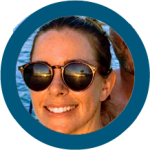
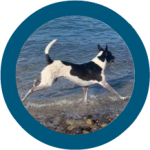
SY SAMLL WORLD III 🇻🇮 Karen & Daren – Bristol 47.7
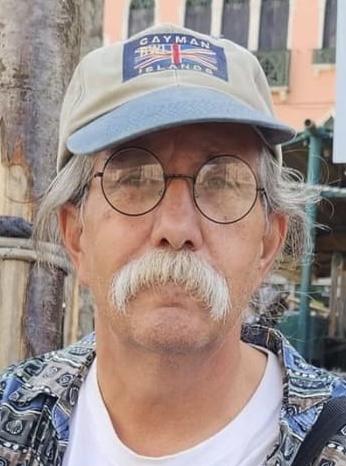
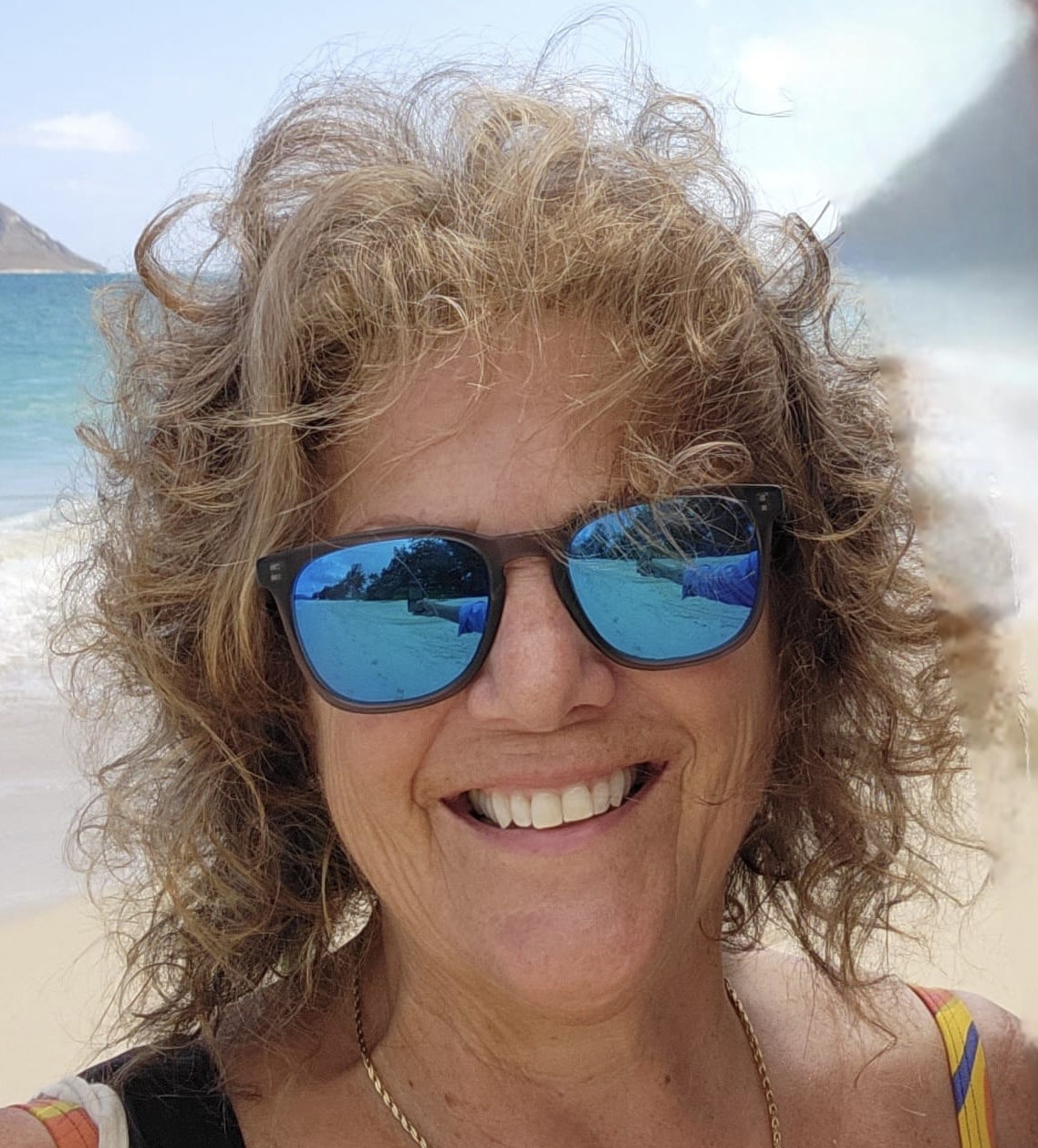
WE ARE EXCITED TO ANNOUNCE …
🌊 Ocean Posse Fleet Insurance Plan
Now Available …8 Years in the Making
We’re are, and this is rare, proud to announce the official launch of the Ocean Posse Group Insurance Program – a global, captain-forward insurance solution designed specifically for long-range cruising vessels. This plan has been 8 years in the making, built from thousands of conversations with yacht owners, feedback from our seminars, and the lessons learned from real-world claims and policies that fell short.
If you’ve ever struggled to find reliable, reasonably priced insurance for bluewater cruising – especially with global navigation, hurricane coverage, or single-handed sailing – this plan is for you.
Over the years, we’ve seen our members declined, dropped, or given inflexible, overpriced policies. So we teamed up with one of the most respected marine insurance brokers in the business, Steve Bonner an accomplished sailor himself, to change that. Steve brings 37 years of experience, a lifelong sailing background, and direct communication with a top-tier underwriter.
This is not a generic policy. It’s a purpose-built plan that reflects the real needs of the Ocean Posse fleet.
Key Features for Ocean Posse Members:
• ✅ Guaranteed Issue for vessels with a survey within 5 years (no automatic declines for minor issues)
• ⚡ Fast Binding – coverage issued within 48 hours in most cases
• 📍 Global Navigation, including Colombia, Panama, the South Pacific, and New Zealand
• 🌪️ Hurricane Coverage without excessive restrictions
• ⚓ Agreed Value Policies (no surprises at claim time)
• 🛥️ Includes Dinghy, Lightning, Pollution, Towing, P&I, Medical, Uninsured Boaters, and Personal Property
• 🇨🇦 No exclusions for Canadians or foreign-flagged vessels
• 🪫 Lithium batteries accepted – DIY or pro install, no red tape
• 🧭 Custom endorsements available for singlehanders, high GL needs (like New Zealand), and more
Member Benefits
All Ocean Posse members who have been part of the Ocean Posse for at least 1 year will receive an automatic 15% discount off regular premiums. Year 2 will have a premium freeze with the same premium as the prior year. And starting in year three, vessels with no claims receive an additional 5% discount off the year 3 premium, guaranteed. That’s real savings, not just empty marketing. We will accomplish this with our large collective group size and a mindset of all of us minimizing claims. Obviously, all blows up if our claims are high and we will be back on our own again. But several years of success will go a long way towards a permanent solution.
This plan has been vetted with the same care we bring to every partnership – not just a checkbox for benefits, but a long-term relationship focused on your safety, mobility, and peace of mind.
How It Works
- Right now, the program is live with a simple intake: just fill out the two forms, attach your most recent survey, and coverage can be bound in 72 hours.
- Within weeks, we’ll launch a custom online portal with streamlined applications, quotes, and payment – all designed for Ocean Posse yacht owners
- Every member gets a welcome call from Steve or his team to go over your coverage, answer questions, and make sure the fit is right.
- No call centers. No corporate script. Just real service from people who understand what it means to be at anchor when the squall line rolls through.
A Major Milestone This is one of the most important benefits we’ve ever added to the Ocean Posse.
It’s designed to protect your vessel, your journey, and your freedom to roam.
We’re proud to offer a solution worthy of the miles you’ve sailed and the ones ahead.
🧭 Learn more and apply @
Captain Dietmar
BROWNS MARINA 🇧🇸 BIMINI BAHAMAS
SPONSORS THE OCEAN POSSE
25°43.325′ 79°17.925′ W
< 50 nm FROM FLORIDA – SAFE APPROACH
We are please to sponsor the Ocean Posse with a 10 % discount off our slip fees.
Christian
Browns Marina
+1 (305) 799-3143
BROWNS MARINA Bimini AmenitieS
- Deep Water Access
- Top Quality Slips Up to 145’+
- 3 Phase 100/50/30 Amp Electrical Service
- The Most Competitive Rates on the Island
- WIFI
- Tiki Hut Bar
- Air Conditioned Shower & Bathroom Facilities
- 24 Hour Security
- Gated
- Volley Ball Area
- Picnic & Lounge Areas
- Stainless Steel BBQs w/ Granite Counter Tops, Stainless Sink
- Large Dining Tables w/ Ample Seating
- Sandy Lounging Area w/ Couches & Chaise Lounges
- New Foliage & Palm Trees
- Scenic Views of the Ocean & Inlet
30 DAY LOOP 🇧🇸 CRUISING THE BAHAMAS >>>
MUST SEE IN THE BAHAMAS 🇧🇸
THE GLASS WINDOW BRIDGE
The Glass Window Bridge is one of the striking natural and man-made landmarks in the Bahamas, located on Eleuthera Island. Known as the “narrowest place on Earth,” this bridge dramatically connects the deep blue Atlantic Ocean on one side with the calm turquoise waters of the Exuma Sound on the other—separated by only a sliver of rock and concrete.
Notable Facts:
• Location: Eleuthera Island, Bahamas
Coordinates: 25°25.0′N 76°19.5′W
• Originally a natural rock arch, it collapsed in the 1940s and was replaced by a man-made bridge.
• The site is known for powerful waves from the Atlantic crashing over the road during storms and heavy swell.
• A metal railing and marker let you safely stand at this unique geographical divide where two oceans meet.
Why it’s Infamous:
• Storm surges have damaged or even swept away parts of the bridge multiple times.
• There are local accounts of vehicles being pushed by rogue waves when attempting to cross in rough weather.
• Despite improvements, it’s still considered dangerous during storms and is sometimes closed temporarily.
WATER MAKER 💧IN DEPTH
ZOOM SEMINARS JULY 17 ’25

Marine Watermakers Seminars Part 2
 Marine Watermakers Seminar Series Segment 2: Installation & Operation at Sea
Marine Watermakers Seminar Series Segment 2: Installation & Operation at Sea
Topics:
-
Planning your install:
-
Where to mount filters, pump, membrane
-
Seawater intake, brine discharge, electrical wiring, thru-hulls
-
-
Electrical & power considerations:
-
Running on solar/wind/battery banks
-
Generator integration
-
-
Operating the system:
-
Startup sequence, flushing, water testing (TDS meters)
-
Manual vs. auto flush
-
-
Tips for conserving water onboard
-
Demo or video of a full operation cycle if possible
!!! OUR FIRST MARINA IN BRAZIL !!!
STELLA MARINA  BRAZIL- ALAGOAS
BRAZIL- ALAGOAS
SPONSORS THE OCEAN POSSE
09° 50.3416′ S 035° 54.61′ W
Special Ocean Posse welcome offer
• February to November:
Special monthly rate for boats between 30 and 50 feet – R$ 1,500
• Yachts in Transit
2 days free
• December and January:
Please inquire about slip availability in advance
AMENITIES
- Bar
- Restaurants
- Historical Sites
- Sail Repair
- Chandleries
- Mechanics
- Supermarkets
- Bakery
NEARBY

One of Brazil’s most stunning beaches, perched between the Atlantic Ocean and Lagoa do Roteiro. Ideal for boat trips through mangroves and natural reefs, as well as surfing, kayaking, and soaking in breathtaking views
2. Lounge at Praia Barra de São Miguel
The charming local beach offers calm, clear waters perfect for swimming, relaxing, and enjoying the laid-back village atmosphere .
3. Explore Conchas Beach
Known for its “shell” pools that form at low tide, this natural attraction is great for snorkeling, exploring tidal pools, and marveling at coastal rock formations .
4. Cruise the São Francisco River Mangroves
Take a boat tour along the “Velho Chico” river. Through rich mangrove ecosystems, enjoy wildlife spotting, scenic lagoon stops, and fresh oysters straight from local farms
5. Day-trip to Praia do Francês & Mirante do Gunga
Combine a visit to nearby Praia do Francês—with its reef-protected pools and vibrant beach scene—with the stunning cliff viewpoints (“Mirante do Gunga”) overlooking the bay and lagoon
6. Stroll along St Peter’s Pier
and savor local seafood at the beachside restaurants in tow
OCEAN POSSE PARTNERSHIP MARINAS
🇦🇺 AUSTRALIA
🇧🇸 BAHAMAS
-
 Browns Marina
Browns Marina -
 Elizabeth on the Bay Marina
Elizabeth on the Bay Marina -
 Blue Marlin Cove Resort & Marina
Blue Marlin Cove Resort & Marina -
 Great Harbour Cay Marina
Great Harbour Cay Marina -
 Romora Bay Resort and Marina
Romora Bay Resort and Marina
🇧🇿 BELIZE
🇧🇲 BERMUDA
🇧🇷 BRAZIL
🇻🇬 BRITISH VIRGIN ISLANDS
🇨🇻 CAPE VERDE
🇰🇾 CAYMAN ISLANDS
🇨🇱 CHILE
🇨🇴 COLOMBIA – Caribbean
-
 Club Nautico Cartagena
Club Nautico Cartagena -
 Club de Pesca Marina Cartagena
Club de Pesca Marina Cartagena -
 Marina Puerto Velero
Marina Puerto Velero -
 IGY Marina Santa Marta
IGY Marina Santa Marta 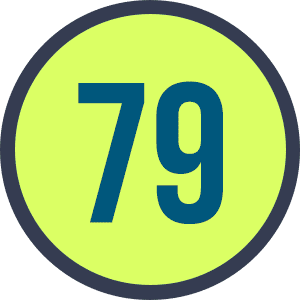 Manzanillo Marina Club
Manzanillo Marina Club
🇨🇷 COSTA RICA – Pacific Coast
🇨🇺 CUBA
🇩🇲 DOMINICA
🇩🇴 DOMINICAN REPUBLIC
🇪🇨 ECUADOR
🇸🇻 EL SALVADOR
🇬🇮 GIBRALTAR
🇬🇩 GRENADA
🇬🇹 GUATEMALA – Pacific Coast
🇬🇹 GUATEMALA Rio Dulce
🇫🇯 FIJI
 Copra Shed Marina
Copra Shed Marina Nawi Island Marina
Nawi Island Marina  Denarau Marina
Denarau Marina-
 Musket Cove
Musket Cove  Royal Suva Yacht Club
Royal Suva Yacht Club Sau Bay Moorings
Sau Bay Moorings
🇭🇳 HONDURAS – Bay of Islands – Roatan
🇮🇹 ITALY
 Marina dei Presidi
Marina dei Presidi  Marina di Balestrate
Marina di Balestrate Marina di Brindisi
Marina di Brindisi Marina di Cagliari
Marina di Cagliari Marina di Chiavari
Marina di Chiavari Marina di Forio
Marina di Forio  Marina di Teulada
Marina di Teulada -
 Marina di Policoro
Marina di Policoro -
 Marina di Vieste
Marina di Vieste -
 Marina de Procida
Marina de Procida -
 Marina de Villasimius
Marina de Villasimius -
 Marina di Vieste
Marina di Vieste -
 Marina Molo Vecchio
Marina Molo Vecchio  Marina Salina
Marina Salina  Venezia Certosa Marina
Venezia Certosa Marina
🇯🇲 JAMAICA
🇲🇶 MARTINQUE
🇲🇽 MEXICO – Caribbean
- Marina Makax – Isla Mujeres
- Marina Puerto Aventuras
- Marina V&V – Quintana Roo
- Marina El Cid – Cancún
🇲🇽 MEXICO – Pacific Coast
- ECV Marina – Ensenada BC
- IGY Marina Cabo San Lucas BCS
- Marina Palmira Topolobampo – SI
- Marina y Club de Yates Isla Cortes – SI
- Marina el Cid – Mazatlan – SI
- Marina Vallarta, Puerto Vallarta – JA
- Marina Puerto de La Navidad – Barra de Navidad – CL
- Marina Ixtapa, Ixtapa – GE
- La Marina Acapulco, Acapulco – GE
- Vicente’s Moorings, Acapulco – GE
- Marina Chiapas – CS
🇳🇿 NEW ZEALAND
🇳🇮 NICARAGUA – Pacific Coast
🇳🇺 NIUE
🇵🇦 PANAMA – Pacific Coast
🇵🇦 PANAMA – Caribbean
- Shelter Bay Marina
- Bocas Marina
- Solarte Marina
- Linton Bay Marina /a>
- Turtle Cay Marina
- IGY Red Frog Marina
🇵🇹 PORTUGAL
🇵🇷 PUERTO RICO
🇱🇨 SAINT LUCIA
Marigot Bay Yacht Haven🇸🇽 SINT MAARTEN
🇪🇸 SPAIN
🇰🇳 ST KITTS & NEVIS
🇹🇳 TUNISIA
🇹🇴 TONGA
🇹🇨 TURCS AND CAICOS
🇻🇮 US VIRGIN ISLANDS
🇺🇸 USA – East Coast
- Safe Harbor – Marathon, FL
- Pier 66 Hotel & Marina – Ft. Lauderdale, FL
- Titusville Marina – FL
- Port 32 Marina Jacksonville – FL
- Oasis Marinas at Fernandina Harbor Marina – FL
- Morningstar Marinas Golden Isles St. Simons Isl. – GA
- Windmill Harbour Marina – Hilton Head , SC
- Coffee Bluff Marina – Savannah GA
- Hazzard Marine – Gerogetown, NC
- Holden Beach – Town Dock, NC
- Tideawater Yacht Marina, Portsmouth, VA
- Ocean Yacht Marina, Portsmouth, VA
- York River Yacht Haven – VA
- Yorktown Riverwalk Landing – VA
- Regatta Point Marina – Deltaville, VA
- Regent Point Marina – Topping, VA
🇺🇸 USA – Pacific Coast
- Safe Harbor Ventura Isle, Ventura CA
- Vintage Marina , Oxnard, CA
- Safe Harbor South Bay – Chula Vista, CA
🇻🇺 VANUATU

MUST SEE
Coronado San Diego Bay 🇺🇸 California USA
CORONADO is a vibrant community with historic and present day navy heritage and offers a rich history. Just over the bridge from San Diego is this small, tree-lined beach haven island, which is really a peninsula connected to the mainland by a neck of land named the Silver Strand.
San Diego land boom
In the mid-1880s, the San Diego region was in the midst of one of its first real estate booms. At that time, it was common for a developer to build a grand hotel as a draw for what would otherwise be a barren landscape.

Coronado Beach Company
In November 1885, five investors went together to buy all of Coronado and North Island, approximately 4,000 acres and in April 1886, Babcock and Story created the Coronado Beach Company, after which they established a number of additional enterprises to support the development of Coronado. The Coronado Ferry Company built wharves and storage facilities and developed ferryboat service between Coronado and San Diego; The Coronado Water Company piped fresh water under San Diego Bay from the San Diego River; The Coronado Railroad Company provided rail lines in Coronado and eventually a “Belt Line” connected Coronado to San Diego via the Strand. Hotel del Coronado also boasted one of the largest electrical power plants in the state, providing service to the entire community of Coronado until the 1920s.

The men hired architect James W. Reid and his brother Watson Reid helped supervise the 2,000 laborers needed for the construction of the grand hotel.
” It would be built around a court… a garden of tropical trees, shrubs and flowers,… From the south end, the foyer should open to Glorietta Bay with verandas for rest and promenade. On the ocean corner, there should be a pavilion tower, and northward along the ocean, a colonnade, terraced in grass to the beach. The dining wing should project at an angle from the southeast corner of the court and be almost detached, to give full value to the view of the ocean, bay and city.”
TREES ON CORONADO
There is a unique list of heritage trees on the island from many areas around the world.
- TORREY PINE / Pinus Torreyana is the rarest pine in the United States and is native to this area
Well-cared for, Coronado’s Torreys grow to more than 50 feet in height. - STAR PINE located in Rotary Plaza was designated a Heritage Tree on April 3, 2008. This Araucaria Heterophylla is native to Norfolk Island in the SW Pacific and was transplanted to this location by Supt. Bandel in 1936.
- MORETON BAY FIG located adjacent to Star Park at 1121 Flora Avenue was designated a Heritage Tree on December 7, 2011. Ficus Macrophylla, native to northeastern Australia, has heavy buttressing trunks that spread to support a massive crown that can grow to more than 100 feet in diameter.
- FERN PINE / Afrocarpus Gracilior (previously known as podacarpus g.) are from eastern Africa.
- ITALIAN STONE PINE clearly visible from the streets is believed to be the largest in the City and was planted as a one foot Christmas tree in 1965. A native of southern Europe, Pinus Pinea grow well here, producing paired bright green needles in a dense umbrella shape.
- DEODAR CEDAR located in the second block of the Orange Avenue was planted in 1952 as one of the forty-two memorial trees to replace the trolley tracks that were removed after World War II. This Cedrus deodara, native to the Himalayas.
- SUGAR GUM is a stately Eucalyptus cladocalyx is representative of the Sugar Gums that were planted on this block at the beginning of the 20th century. Eucalyptus were imported from Australia soon after California’s Gold Rush, 90% of them being Tasmanian Blue Gums. The Blue Gums are structurally weak and have other problems which these Sugar Gums lack.
- NORFOLK ISLAND PINE was designated a Heritage Tree on February 5, 2015. Araucaria heterophylla, sometimes called Star Pine, is native to a small beautiful southwest Pacific island. It grows wonderfully well and very tall in Coronado. This beautiful specimen about 100 years old is on the property of a historically designated home moved from Ocean Boulevard after the 1905 storm that washed away some of the boulevard.

DOG FRIENDLY BEACH
Voted one of America’s finest beaches Coronado is known for its pristine sandy beaches with sand courtesy of the mineral Mica.
You can even bring your four legged friends to North Beach, where dogs are allowed off-leash year round!

START STUDDED HISTORY

In 1958 a trio of actors checked into the Hotel Del Coronado to film what would become the most lauded comedy of all time – Billy Wilder’s SOME LIKE IT HOT.
A funny as hell screenplay with award-winning performances from screen legends Tony Curtis, Jack Lemmon and Marilyn Monroe during what is said to be one of the happiest times in her life.
EXPENSIVE REAL ESTATE – NAVY SEAL HQ
Coronado is also home to some of the most expensive real estate per sqft in California with cultural attractions such as the world-famous, historic Hotel Del Coronado—visited by many U.S. Presidents and global dignitaries, the Coronado Museum of History and Art, and the U.S. Navy SEAL Headquarters.

MARINAS, FERRIES, BRIDGES AND ANCHORAGES
Public Docks
Glorietta Bay Marina is a Clean Marina Certified marina managed by California Yacht Marina.
Centrally located adjacent to the historic Hotel Del Coronado and Coronado’s vibrant downtown mainstreet, Glorietta Bay Marina features brand new dock systems with 100 slips ranging in size from 20’ to 110’feet. Each slip includes electrical power, water and cable/internet connections. Showers, restrooms, and a coin operated laundry are provided on-site for tenants and guests.

The Glorietta Bay Marina offers both transient and permanent docks. There is currently a waitlist for dockage. For more information on slip availability and transient docking please contact California Yacht Marina at (619) 435-5203 or by email at gbm@californiayachtmarina.com.

THE CORONADO BRIDGE
In 1926, John D. Spreckels recommended that a bridge be built between San Diego and Coronado, but voters dismissed the plan. The U.S. Navy initially did not support a bridge that would span San Diego Bay to connect San Diego to Coronado. They feared a bridge could be collapsed by attack or an earthquake and trap the ships stationed at Naval Base San Diego.
In 1951–52, the Coronado City Council initiated plans for bridge feasibility studies. By 1964 the Navy supported a bridge if there was at least 200 feet (61 m) of clearance for ships which operate out of the nearby Naval Base San Diego to pass underneath it. To achieve this clearance with a reasonable grade, the bridge length was increased by taking a curved path, rather than a more direct path to Coronado. The clearance would allow an empty oil-fired aircraft carrier to pass beneath it
The principal architect was Robert Mosher. Construction on the San Diego–Coronado Bay Bridge started in February 1967. The bridge required 20,000 tons of steel and 94,000 cubic yards of concrete. To add the concrete girders, 900,000 cubic yards of fill was dredged and the caissons for the towers were drilled and blasted 100 feet into the bed of the bay. It is supported by 27 concrete girders, the longest ever made at the time of construction.
The center span of the Coronado Bay Bridge was designed to float in the event of a bombing, according to local urban legend. Though the 1,880-foot-long center section of the bridge is hollow, the circumstances that would allow it to fall 200 feet and somehow still float are beyond improbable.

FERRY FROM DOWNTOWN SAN DIEGO

To get a across to Corando take a scenic boat ride across the bay to/from Coronado, aboard a piece of San Diego history with a scenic 15-minute ride to the Coronado Ferry Landing, a waterfront marketplace full of over 25 unique shops and restaurants, and convenient access to all that Coronado Island offers!

ANCHORAGES
Beginning July 1, 2021, the Port of San Diego’s Maritime Department will assume management responsibilities from the Harbor Police Department for anchorages on San Diego Bay, including the Glorietta Bay A5 anchorage, and the Port’s Shelter Island Guest Docks located at 1401 Shelter Island Drive on the southern end of Shelter Island at the entrance to the Shelter Island Yacht Basin.

The Port also provides two 72-hour anchorages and a “Cruiser Anchorage.” Aside from the management change, no additional changes are being made for the anchorages at this time. No fee is required to anchor in these areas; however, a permit is required. Permits for the A1 and A5 anchorages are still available online. For the A9 anchorage, permits still require a vessel inspection performed by a Harbor Police Officer and must be obtained in person at the Harbor Police substation located at 1401 Shelter Island Drive.
Anchorage locations are:

Primary Named Winds in the Mediterranean 🌬SIROCCO
Siroccos arise from warm, dry, tropical air masses that are pulled northward by low-pressure cells moving eastward across the Med with the wind originating in the Arabian or Sahara deserts. The hotter, drier continental air mixes with the cooler, wetter air and the counter-clockwise circulation of the low propels the mixed air across the southern coasts of Europe.
Effects
The sirocco causes dusty dry conditions along the northern coast of Africa, storms in the Mediterranean Sea, and warm wet weather in Southern Europe. The sirocco does not affect other parts of Europe. The sirocco’s duration may be as short as half a day or may last several days. While passing over the Mediterranean Sea, the sirocco picks up moisture; this results in rainfall in the southern part of Italy known locally as “blood rain” due to the red sand mixed with the falling rain.
- The dust can irritate the respiratory system, triggering asthma attacks and other breathing difficulties.
- The high temperatures and low humidity can lead to heatstroke, dehydration, and other heat-related illnesses.
- Some people experience headaches, insomnia, and general unease during Sirocco events due to the heat, dust, and humidity.
- The dry and hot conditions associated with Sirocco winds can exacerbate the risk of wildfires, especially during the summer months when vegetation is already dry.
- The dust can significantly reduce visibility, impacting transportation and other activities.
⚓️ SAILING STRATEGIES
1. Route Planning
* Favor protected anchorages with shelter from SE winds (e.g., coves open to NW).
* Avoid long SE-facing fetches, the Sirocco can create long, confused seas in open waters.
* If heading northwest, the Sirocco gives a broad reach or downwind advantage.
2. Sail Handling
* Reef early,gusts can be sudden and strong.
* Prepare for unpredictable lulls followed by violent gusts.
* Double-check gybe preventers if sailing downwind in a swell.
3. Visibility
* Expect poor visibility (hazy or reddish sky from Saharan dust).
* Use radar, AIS, and sound signals prudently, especially near busy shipping lanes or when near land.
4. Anchoring Tips
* Choose anchorages with solid holding (many Mediterranean spots have weed or soft silt).
* Drop extra scope, gusts may shift your boat unpredictably.
* Set anchor alarms and consider backing down under power to test your set.
🧭 REGIONAL INSIGHTS
Adriatic Sea:
* The Sirocco (called Jugo) can build long swells. Many harbors are open to the south—plan exits early.
Central Med (Italy/Tunisia/Malta):
* Frequently heralds storm systems. Do not assume steady trade-wind-like conditions—monitor barometer closely.
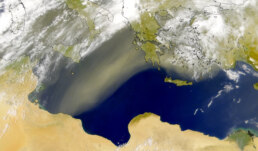
SEASON 9 REGISTRATION IS NOW OPEN >>>
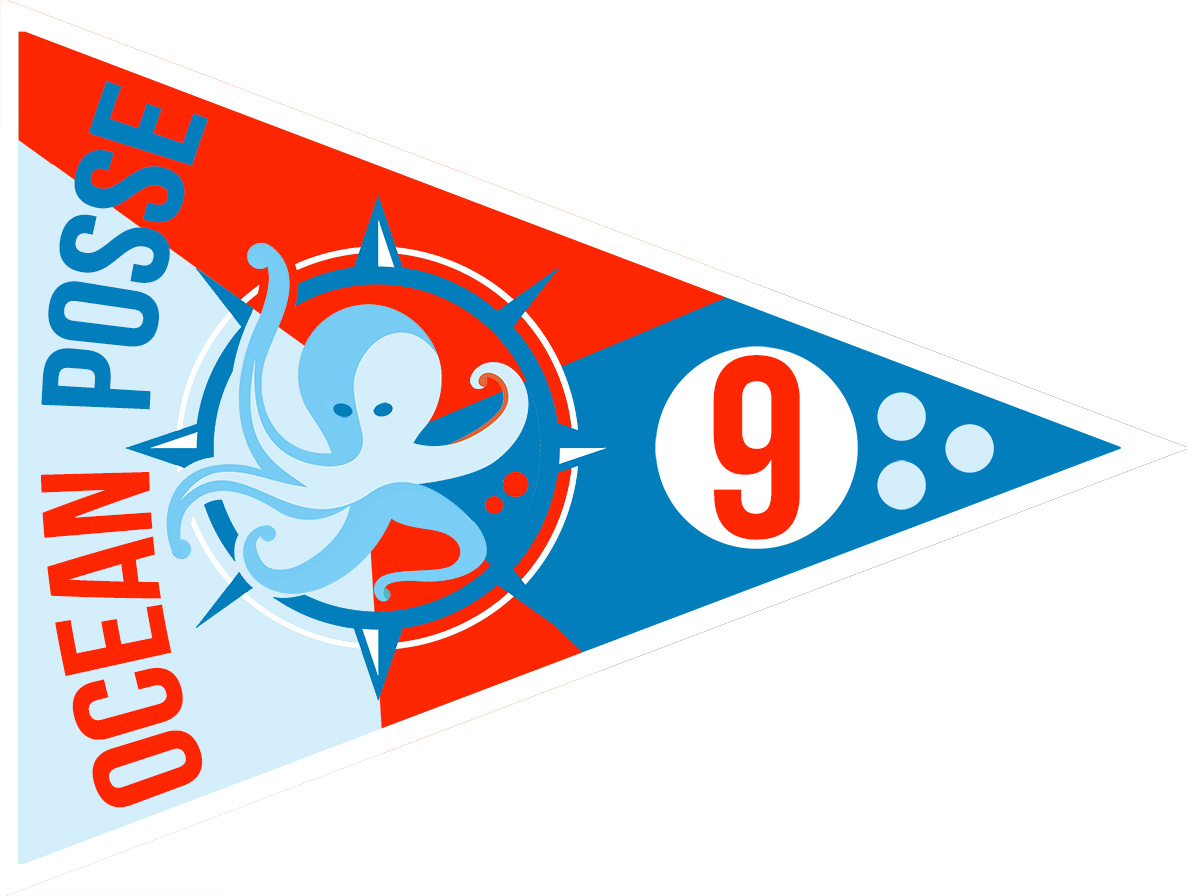
NEW VESSEL ON BOARDING ZOOM CALL
SATURDAY JULY 26, 2025
YOU ARE CORDIALLY INVITED TO MEET YOUR PEERS

MEET THE FLEET  SY PILAR
SY PILAR

PILAR carries a name rich with meaning. In Spanish, Pilar is often seen as the steadfast pillar of the family. It’s also famously associated with Ernest Hemingway—used for a beloved character, his affectionate nickname for his wife, and the name of his renowned 38-foot Wheeler sportfishing boat. Today, PILAR continues that legacy as our trusted vessel. She’s currently berthed on the east coast of South Carolina, weathering hurricane season after an adventurous stretch that took us from Charleston to New England, up to Maine, and down through Hampton, Antigua, Grenada, and the Bahamas. The Grenadines—especially Bequia, Union, and the Tobago Cays—stand out as highlights. With fall approaching, we’re setting our sights on the Caribbean once more, and onward toward Panama.

Life Aboard and Lessons Learned
Stephen’s roots in sailing go back to youth—delivering boats up and down the East Coast, out to Bermuda, through the Caribbean, and westward via the Panama Canal. Dawn joined the lifestyle more recently, but over seven years she’s proved her mettle, embracing long passages and uncertain weather with steady resolve. Since Stephen’s retirement in 2023, we’ve been cruising full-time. Dawn continues working remotely via Starlink, allowing us to stay afloat—literally and figuratively. One lesson that caught us off guard was provisioning. The reality of limited food availability in remote anchorages has taught us to stock months ahead, make the most of onboard cooking, and enjoy every fresh catch we can land. It’s all part of learning to be resourceful, self-sufficient, and ready for anything.
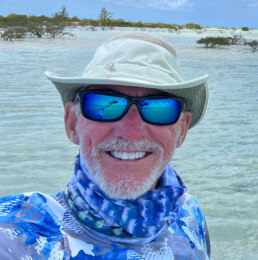
Sailing Philosophy and The Call of the Sea
Cruising for us is a personal journey, yet one deeply enriched by the community we’ve met along the way. There’s a certain solidarity among cruisers—a quiet understanding and willingness to lend a hand—that makes this lifestyle more than just passage-making. One of our most meaningful experiences remains the time spent sailing from St. Thomas to San Diego in the 1980s, stopping in San Blas before most sailors ventured there. The connection we shared with the Guna people then still echoes. Moments like these, or those perfect beam reach days—15 to 20 knots of wind, 8.5 knots on the water, dolphins in our wake—remind us of the joy, scale, and solitude that only the sea can offer. While a circumnavigation remains an unspoken goal, we sail knowing life may shift our course. Still, the compass points west, and we keep following.
And yes—we fully embrace the truth that cruising is the most expensive way to get somewhere for free… and wouldn’t have it any other way.
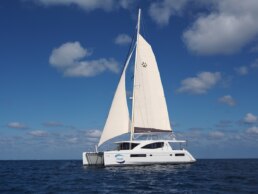
 Stephen & Dawn – Leopard 48′
Stephen & Dawn – Leopard 48′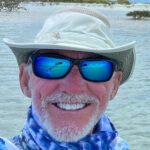

SOUTH PACIFIC POSSE – MEET THE CRUISING FLEET – SAT AUG 30 – NAWI ISLAND MARINA
-
15:00 YACHT MARKET OVERVIEW FOR BUYERS AND SELLERS PRESENTED BY
THE YACHT SALES CO -
15:30 THE PASSAGE TO NEW ZEALAND – PRESENTED BY OCEAN TACTICS
-
16:00 MEET AND MINGLE AND FREE RUM
-
17:00 LET THE FEAST BEGIN …
-
19:00 KAVA AND RUM AFTER HOURS
OFFICIAL OCEAN POSSE EVENTS
SOUTH PACIFIC CROSSING PARTY AT Nawi Island Savusavu 🇫🇯 Fiji
NAWI ISLAND MARINA & RESORT, SAVUSAVU FIJI
OCEAN POSSE & BEN TAYLOR STREET PARTY @ CANNES 🇫🇷 YACHTING FESTIVAL
TAQUERIA LUPITA, 72 Rue Meynadier, Cannes
OCEAN POSSE @ GENOA 🇮🇹 INTERNATIONAL BOAT SHOW
Genoa Boat Show, Via dei Cantieri Navali, 16128 Genova GE, Italy
GRAND PAVOIS 🇫🇷 La Rochelle – Sep. 24 2025
Gran Pavois La Rochelle, 20 Av. de la Capitainerie, 17000 La Rochelle, France
OCEAN POSSE 🇪🇸 KICK OFF PARTY @ YACHT PORT CARTAGENA
YACHT PORT CARTAGENA SPAIN, MURCIA SPAIN
ANNAPOLIS BOAT SHOW 🇺🇸 MARYLAND USA
ANNAPOLIS, Annapolis Town Dock Booth VB 9
OCEAN POSSE 🇺🇸 SAN DIEGO BAY 4 DAY CRUISING SEMINARS SERIES @ SAFE HARBOR SOUTH BAY
SAFE HARBOR SOUTH BAY EVENT CENTER, CHULA VISTA, SAN DIEGO, CA
OCEAN POSSE KICK OFF 🇲🇽 BARRA DE NAVIDAD, MEXICO December 3-7 2025
MARINA PUERTO DE LA NAVIDAD, BARRA DE NAVIDAD, MEXICO
GRAND PAVOIS 🇫🇷 La Rochelle – Sep. 24 2025
Gran Pavois La Rochelle, 20 Av. de la Capitainerie, 17000 La Rochelle, France
FLOR DE CAÑA RUM SPONSORS THE OCEAN POSSE
⚠️ OCEAN POSSE SAFETY BULLETIN
Lithium Battery Fires Aboard
Ahoy Skippers, Captains, Crws, Harbor Masters, and Marinas
With the growing number of lithium-ion batteries aboard modern vessels – powering everything from navigation gear to e-bikes and watermakers – it’s critical we address a fire risk unique to these compact energy sources: thermal runaway.
⚠️ Traditional ABC, CO₂, or dry chemical extinguishers are not effective once thermal runaway begins. These extinguishers may knock down flames, but they will not stop the internal chemical reaction or cool the battery sufficiently to prevent re-ignition.
-
🔥 Once thermal runaway begins, traditional extinguishers are of limited value.
-
💧 Water cooling or specialized agents are more effective.
-
⚠️ Early detection and isolation are critical.
Extinguishing Agents Designed for Lithium Fires
Several modern extinguishing agents have proven significantly more effective at tackling lithium-ion battery fires, offering both cooling and re-ignition prevention:
* Hydrogel
A water-based gel with modified clay that rapidly cools the fire, blocks oxygen, and prevents flammable gas release. Ideal for compartmentalized battery spaces.
* K36 Agent
A dry agent using high-surface-area clay particles. It creates a fire-suffocating blanket, stopping oxygen flow and reducing off-gassing. Works on lithium and other fire classes.
* AVD (Aqueous Vermiculite Dispersion)
Fine vermiculite particles suspended in water. When sprayed, it forms a heat-absorbing mist and mineral barrier, effectively stopping flame spread and reducing battery temperature.
The Challenge of Lithium Battery Fires
Lithium-ion batteries are lightweight, high-performance, and efficient – but when damaged, overcharged, or improperly stored, they can enter thermal runaway, where one overheating cell sets off a chain reaction in neighboring cells.
Water mist or flooding is often recommended by fire safety experts. Water absorbs heat and may slow or prevent propagation to nearby cells water is not dangerous on lithium-ion fires and is now used by many fire brigades (especially for EV and e-bike battery fires)
Lithium battery fire suppression blankets or specialized lithium battery extinguishing agents (like Lith-X, Aqueous Vermiculite Suspension (AVS), or Firebane) are more effective.
Compartmentalization and early isolation om a vessel are key. If one cell starts to fail, stop charging, and cool the battery if possible. How to remove and dump an battery in an emergency ?
3. What Makes a Lithium Fire Extinguisher Effective?
When evaluating fire suppression equipment aboard, look for agents with these key characteristics:
* High Cooling Capacity
Rapidly lowers the temperature to halt thermal runaway propagation.
* Oxygen Isolation
Forms a barrier to prevent oxygen from feeding the fire.
* Re-ignition Prevention
Many lithium battery fires reignite – the right extinguishing agent must prevent this.
* Environmental Safety
Choose non-toxic, residue-free, marine-safe options when available.
4. Recommendations for Ocean Posse Vessels
* 🔌 Isolate charging batteries and avoid charging lithium batteries ( non ion ) unattended or overnight.
* 🧯 Upgrade your fire suppression kit to include at least one lithium-rated extinguisher (AVD or equivalent).
* 🌡️ Store lithium batteries in ventilated, fireproof containers or lockers, preferably in cool, shaded areas.
* 📦 Inspect battery packs regularly for swelling, corrosion, or excessive heat.
* 🚒 Practice fire drills that include battery fires and know how to isolate your electrical system.
OCEAN POSSE SPONSORS
OCEAN POSSE SPONSORS
- ABERNATHY – PANAMA
- BELIZE TOURISM BOARD
- BOAT HOW TO
- CABRALES BOAT YARD
- CENTENARIO CONSULTING – PANAMA CANAL
- CHRIS PARKER – MARINE WEATHER CENTER
- DELTA MIKE MARINE SUPPLY PANAMA
- DIGITAL YACHT
- DOWNWIND MARINE
- EL JOBO DIST. COSTA RICA
- FLOR DE CAÑA
- HAKIM MARINA AND BOAT YARD
- HERTZ RENTAL CARS MEXICO
- HOME DEPOT PRO MEXICO
- LATITUDES AND ATTITUDES
- MARINA PAPAGAYO
- NOVAMAR YACHT INSURANCE
- PANAMA YACHT BROKER
- PREDICT WIND
- SAFE HARBOR SOUTH BAY MARINA EVENT CENTER
- SAN DIEGO MARINE EXCHANGE
- SAFETY ONBOARD COSTA RICA
- SEVENSTAR YACHT TRANSPORT
- SHAFT SHARK
- SUN POWERED YACHTS
- WESTMARINE PRO
- YACHT AGENTS GALAPAGOS
OCEAN POSSE FLEET 🛰️ TRACKING
This page is designed to give interesting parties an overview. For specific vessel details including their floatplan, latest updates, changes, positions and specific location related questions please contact each vessel directly. Due to privacy we do not provide vessel contact information. You may track vessels via it’s own tracker or request AIS tracking from https://www.marinetraffic.com/ please note that this is also not accurate. There are many reasons why a vessel’s position is not updated and please do not conclude that a vessel has an emergency or is in need of assistance because it has not reported in lately. Sometimes they may just want to get away from it all and not tell you where they are. It is the responsibility of each vessel to file a float and check in plan and escalation procedures.
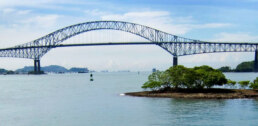
The Bridge of the Americas (Puente de las Américas) in Panama:
It was built with enough clearance for the tallest ships to pass—except one!
When completed in 1962, the Bridge of the Americas provided 61.3 meters (201 ft) of vertical clearance, allowing nearly all ships using the Panama Canal at the time to pass beneath it. However, in 2008, the cruise ship Carnival Freedom was denied transit because it exceeded the bridge’s height limit—even with its retractable smokestack !
Bonus nautical trivia:
The bridge is at the Pacific entrance to the Panama Canal and officially connects North and South America, making it one of the few places in the world where you can drive across continents in a single minute.
PANAMA POSSE CANAL AGENTS
To arrange for transit with the Panama Canal Authority please contact our dedicated Panama Canal agents and sponsors of the Panama Posse and the Pacific Posse
CENTENARIO CONSULTING

Erick Gálvez
info@centenarioconsulting.com
www.centenarioconsulting.com
Cellphone +507 6676-1376
WhatsApp +507 6676-1376

3 CRUISING SERIES
OPEN CPN SEMINARS IN AUGUST
OpenCPN is the ultimate navigation tool for cruisers. It’s free, open-source, and customizable with global chart support, real-time GPS, AIS, radar overlays, and powerful plugins. Whether you’re coastal hopping or ocean crossing, OpenCPN delivers reliable navigation without vendor lock-in—trusted by sailors worldwide for its flexibility, accuracy, and community-driven innovation.
AUG 7
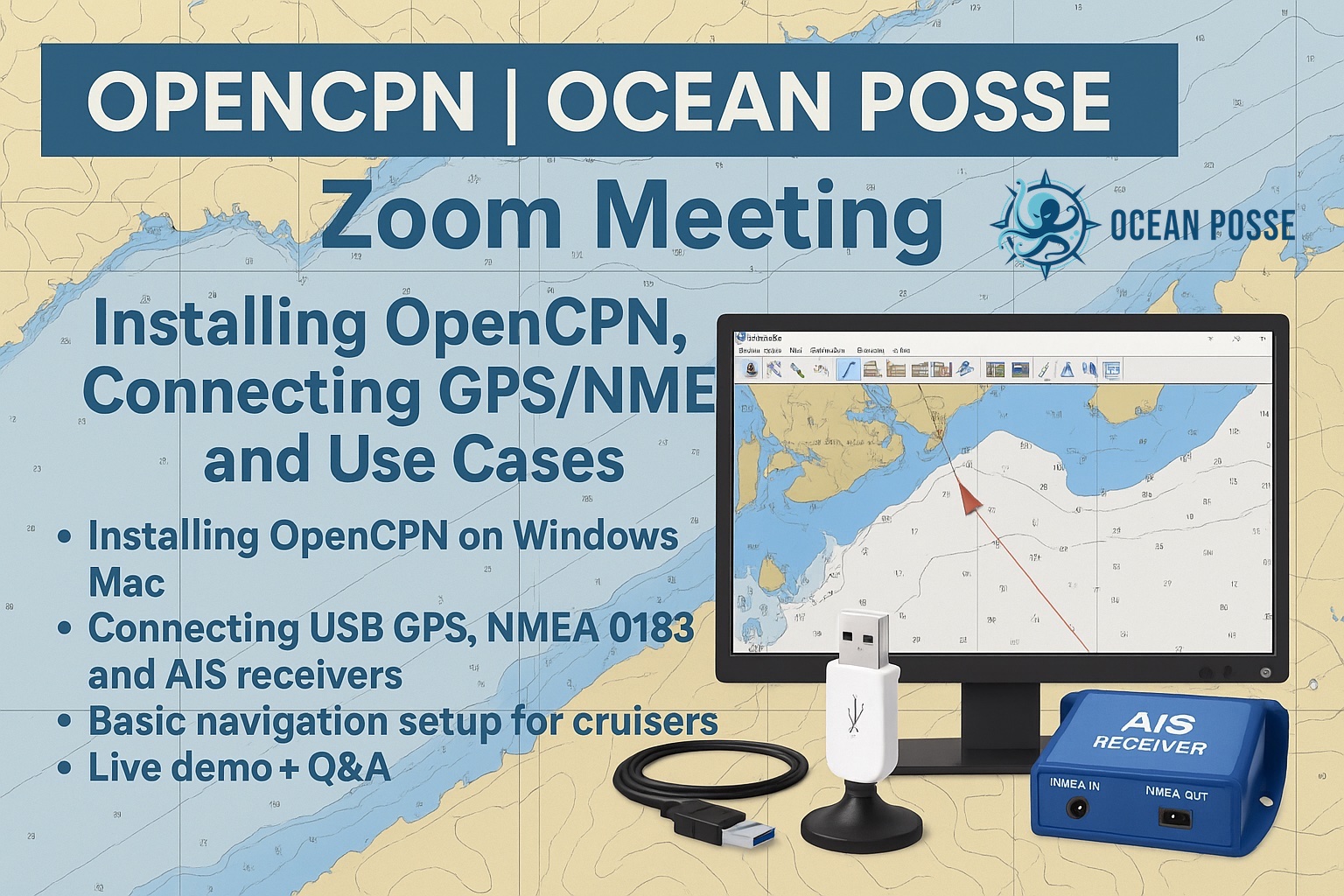
⚓ How to Secure a Yacht to Mangroves for a Hurricane
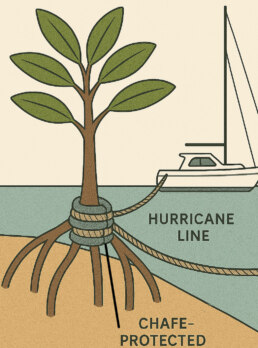
⚓ How to Secure a Yacht to Mangroves for a Hurricane
1. Choose the Right Spot
• Seek a well-protected mangrove-lined creek or hurricane hole with minimal fetch and good holding.
• Avoid areas with strong tidal currents or overhead hazards (power lines, branches).
2. Prepare the Boat
• Remove all sails, canvas, solar panels (if possible), and anything wind-exposed.
• Seal hatches and deck openings; double check bilge pumps are functional.
• Fully charge batteries and shut down unnecessary electrical loads.
3. Set Multiple Anchors
• Drop a primary bow anchor in the center of the creek (ideally with chain + rode).
• If possible, drop a secondary stern or side anchor for directional stability.
4. Run Multiple Mangrove Lines
• Take long, chafe-protected lines (preferably 3/4″ or larger) from strong cleats or winches to mangrove trunks.
• Run lines aft, forward, and abeam to create a web holding the boat in position.
• Tie to thick trunks (not roots) using a round turn and two half hitches, or secure a loop with a bowline around the trunk.
• Use sacrificial lines (old lines, webbing) around the trees to avoid damaging bark.
5. Allow for Tidal Surge
• Ensure there’s vertical play in all lines—tie high enough on trees to stay clear during surge, and allow slack to prevent snapping under rising water.
• Avoid over-tightening lines; lines should be snug but not under extreme tension.
6. Chafe Protection
• Add hoses, towels, fire hose, or anti-chafe gear at every rub point—especially where lines meet chocks, cleats, or trunks.
• Check and replace any UV-brittle lines.
7. Final Checks
• Lock the helm amidships.
• Remove or double lash dinghies, or sink them next to the yacht.
• Add fenders even if you’re not near a dock—rubbing on mangroves or against your own lines can still cause abrasion.
Good Nautical Cyclone hole in Fiji @ Denarau / Nadi River video by Capt. Kurt Roll
 Tidbits
Tidbits
🗿 Ancient Royal Tomb Discovered Deep in the Belizean Jungle
Ahoy history buffs and cruisers exploring the western Caribbean!
A major archaeological discovery just surfaced inland from the turquoise coast of Belize: the tomb of Te K’ab Chaak, the founding ruler of the mighty Maya city of Caracol, has been uncovered after more than 40 years of excavation.
This jungle metropolis once held sway over the southern Yucatán between 560 and 680 AD—just a few centuries before it was swallowed by the forest. Now archaeologists from the University of Houston have located the first-ever confirmed royal burial at the site, dating back to 331 AD.
The tomb, found beneath a royal shrine, held an impressive stash of ancient riches: jadeite jewelry, a mosaic mask, carved bones, spondylus shells from the Pacific, and pottery painted with images of gods, rulers, and bound captives. One vessel even shows Ek Chuah, the patron deity of traders and travelers—perhaps a spiritual guide for Maya mariners.
Also found: ceramic lids topped with coatimundi heads (a local forest creature called tz’uutz’ in Maya), a symbol later adopted into royal names—like a totem carved into a yacht’s figurehead.
So if you’re cruising the Belize coast this season, anchor off the reef, head upriver by land, and consider a day trip to Caracol—it’s a rare chance to glimpse the powerful seafaring and trading legacy of the ancient Maya.
⚓️ From coral to jungle, this region oozes history
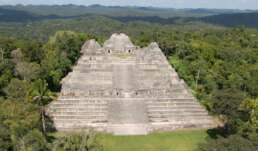
BAHAMAS CRUISING FEES UPDATE
⚓ Cruising & Entry Permits (Effective July 1, 2025)
Temporary Cruising Permit (valid for 12 months, two entries per permit):
* Under 50 ft: US $500
* 50–99 ft: US $1,000
* 100 + ft: US $3,000
Frequent Digital Cruising Card (FDCC – valid 2 years, unlimited entries):
* Under 50 ft: US $1,500
* 50–99 ft: US $2,500
* 100 + ft: US $8,000
🐟 Fishing Permit (separate, 30-day duration)
* Under 50 ft: US $100
* 50 + ft: US $300
⚓ Anchorage Fees (outside marinas, up to 12 months)
* Under 50 ft: US $200
* 50–99 ft: US $350
* 100 + ft: US $1,500
🧭 Passenger Head Tax
* US $30 per extra non-resident passenger aged 6+
📡 AIS Requirement & Penalty
* All foreign vessels 50 ft+ must have AIS installed, active, and transmitting at all times in Bahamian waters (even at anchor)
* Non-compliance carries a fine of up to US $1,000
🧭 Entry Clearances & Process
* Click2Clear digital submission required for cruising permit or FDCC
* FDCC applications won’t be available digitally until mid‑July—apply on arrival at Customs with card or cash payment
* Clearing out (departure) costs US $75
💵 Sample Cost: Under 50 ft Boat, 30‑Day Stay
12‑month cruising permit $500
Fishing permit $100
Anchorage fee $200
Passenger tax (if applicable) $30+
Total $800+
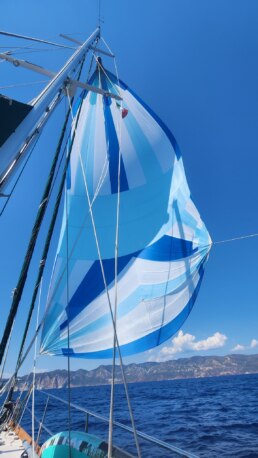
Extraordinary Cruising °°° Join the Fleet
- Access vetted local knowledge, safety resources, and prior experiences to make your passage safer and more enjoyable.
- Unlock a Life of Adventure
Explore hidden destinations, experience new cultures, and discover the freedom of life at sea or near shore – on your terms. - Get VIP Perks & Discounts at marinas, chandleries and boatyards
Get exclusive discounts, priority access, and personalized support at partner marinas across the globe. - Observe the actions of Experienced Captains
Tap into a wealth of tips, tools, and real-world know-how from seasoned mariners to grow your skills and gain confidence. - Make Every Nautical Mile Memorable
Join events, meetups, and shared journeys that turn you voyages into unforgettable stories and lasting memories. - Cruise with a Conscience
Gain insights into sustainable practices and join a movement that protects the waters you love to explore.


